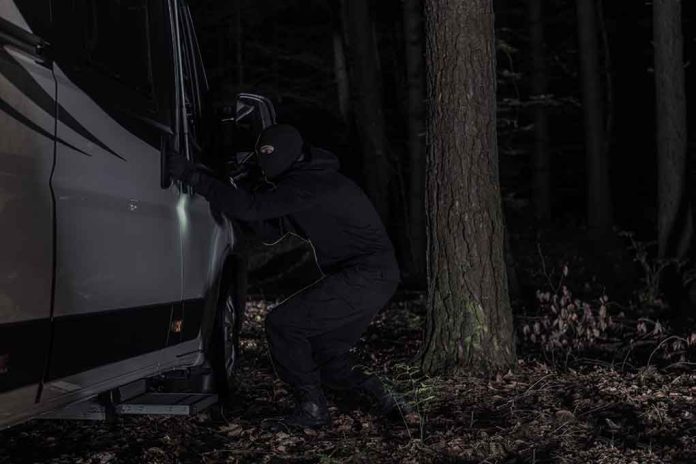Don’t let Anyone Sneak Up On You – Try This!
(ModernSurvival.org) – For some, mentioning perimeter alarms conjures up images of laser tripwires and deadly traps. While these may be good for protecting priceless diamonds, they’re a bit beyond what the average survivalist can afford. That doesn’t mean they have to leave their campsite, bug-out location, or homestead undefended, however. It just means becoming a bit resourceful is all.
Who Needs a Perimeter Alarm?
The first question that likely comes to mind for most people here is, why on earth would anyone need to set up perimeter alarms?
For starters, anyone who goes out camping might want to consider setting up perimeter alarms around camp. Having some form of advanced warning, should a bear decide to venture too close to the tent, is a very good idea. Better to know it’s coming than end up with an unwelcome visitor trying to enter the tent.
Secondly, in a post-collapse situation, knowing how to set up perimeter alarms could mean the difference between life and death, should scavengers or raiders come calling.
How to Set Up a Perimeter Alarm
Setting up a simple perimeter alarm is a relatively easy task that can be accomplished with some very basic ingredients. In fact, with a couple of tin cans, some cordage, and a stick, anyone can construct an effective perimeter alarm.
To show how it’s done, BlackScout Survival has provided the following instructional video:
For the method shown in the video, locate a tree with a y-shaped trunk. Suspend a group of tin or aluminum cans between the two trunks. Next, loop paracord (or another cordage) loosely around the trunks, below the cans.
The next step requires three different sticks of roughly the same diameter. One should be approximately the length of a forearm, on the length of an index finger, and one slightly longer than the width between the two trunks of the tree.
Take the forearm-length stick and place it in the center of the bottom piece of cordage (between both sides of cord), then begin to twist the stick. This will begin to create tension on the stick so that when released, it will spin and strike the cans above.
Once the stick has created a great deal of tension, place the longer stick between the y-shape, and use the small stick to act as a trigger — between the tension stick and the brace. The actual tripwire is attached to this smaller “trigger” stick so that when something passes through the wire, it releases the tension stick, allowing it to spin through the cans.
For an even simpler alarm, one can forego the y-shaped trunk mechanism altogether. Simply string cans with rock or bolts inside from the tripwire itself (tied between two trees or stakes), which will rattle when something passes through. Even trying a few partially crushed soda cans together and then hanging them from a tripwire is effective enough to serve as a perimeter alarm.
Unfortunately, it isn’t just wild animals that are a threat when a person is out camping. For information on how to defend the campsite from two-legged predators, check out our article here.
~Here’s to Your Survival!
Copyright 2022, ModernSurvival.org













